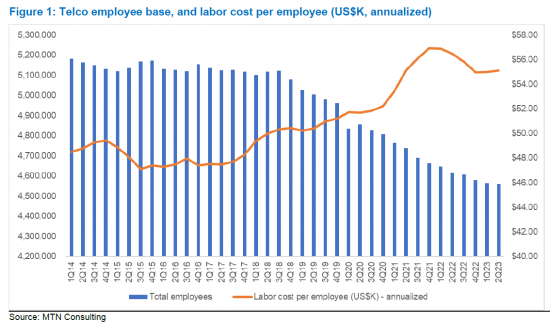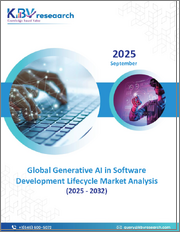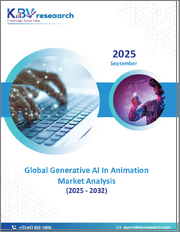
|
시장보고서
상품코드
1388504
생성 AI가 통신 업계를 석권 : 네트워크 최적화와 차별화된 고객 경험은 유망한 출발점이 되나, 규제상 불확실성이 큰 장애Gen AI Hype Grips Telecom Industry as Telcos Unravel its Potential: Network Optimization and Differentiated Customer Experience are Promising Starting Points, but Regulatory Uncertainty Will Be a Major Impediment |
||||||
두 유형의 통신 분야에서 생성 AI에 의한 변혁의 가능성에 대해 탐구하고, 통신 기업의 내부에서 생성 AI 개발 노력 및 생성 AI의 도입에 수반하는 노동력의 동향, 통신 기업의 생성 AI 도입에 수반하는 규제면의 영향, 기술의 통합·도입을 성공시키기 위한 벤더의 역할 등에 대해 논의하고 있습니다.
본문중 도표

지난해 말, 생성형 AI가 ChatGPT와 같은 일반인용 플랫폼을 통해 주류에 등장한 이후, 그 획기적인 능력은 많은 사람들의 관심을 끌었습니다. 놀랍지 않게도 통신 업계 임원들은 생성형 AI가 빠른 속도로 진화하고 있음에도 불구하고 생성형 AI를 시험해보고 싶어하는 호기심 많은 관찰자 중 한 명입니다. 그러나 통신 산업과 AI의 결합은 새로운 것이 아닙니다. 지난 수년간 많은 통신사들이 전통적인 AI 툴와 용도을 도입했지만, 생성형 AI는 통신사들이 기존 AI보다 훨씬 더 많은 가치를 제공할 수 있는 기회를 제공합니다. 일부 대형 통신사들은 '현지화'에 초점을 맞추어 생성형 AI에 대한 탐구를 시작했습니다. 통신사들은 생성형 AI를 활용한 프로세스 현지화를 통해 언어 장벽을 없애고, 특히 영어가 지배적인 언어가 아닌 각 영업 시장에서 고객 참여를 향상시키고자 합니다.
통신사는 다양한 기능에서 생성형 AI의 힘을 활용할 수 있지만, 생성형 AI의 혁신 가능성을 가장 잘 볼 수 있는 두 가지 중요한 통신 비즈니스 영역은 네트워크와 고객 서비스입니다. 이 두 영역은 모두 매우 중요하며, 네트워크에 대한 수요는 복잡성과 함께 전례 없는 속도로 증가하고 있으며, 차별화된 고객 경험을 제공하는 것은 통신사에게 실현 불가능한 야망으로 남아있습니다. 이 두 가지 통신 사업 영역에서 이러한 과제를 해결하기 위해 여러 가지 생성형 AI 이용 사례가 등장하고 있습니다. 네트워크 영역에서는 토폴로지 최적화, 네트워크 용량 계획, 예지보전 등을 예로 들 수 있습니다. 고객 지원 영역에서는 현지화된 가상 비서, 개인화된 지원, 컨택센터 문서화 등을 예로 들 수 있습니다.
생성된 AI 용도을 활용하는 대부분의 이용 사례는 네트워크 관련이든 고객 관련이든 기밀 데이터를 다루게 됩니다. 이는 규제 측면에서도 큰 영향을 미치며, 규제 이슈는 통신사의 생성형 AI 도입 및 배포 전략을 제약하는 요인으로 작용합니다. 가장 큰 문제는 다양한 시장에 퍼져 있는 복잡하고 까다로운 규제의 집합체이며, 통신사는 이러한 시장에서 생성형 AI 이용 사례를 도입할 때 이를 이해하고 준수해야 한다는 점입니다. 이 분야에서 제3자 벤더들은 각 시장의 규제를 준수하는 생성형 AI 솔루션을 제공함으로써 이익을 얻으려 하고 있습니다. 벤더들은 또한 중소형 통신사들이 생성형 AI를 도입할 때 기술 전문 지식, HW/SW 리소스, 숙련된 인력 부족으로 인한 제약을 없애고 OPEX 비용 부담을 줄여주는 데 중요한 역할을 할 것으로 보입니다. 생성형 AI 분야에서 주목해야 할 주요 벤더는 대규모 언어 모델(LLM) 학습에 필요한 클라우드 컴퓨팅 리소스와 사전 학습된 모델을 통해 제공되는 생성형 AI 전문 지식을 결합한 이상적인 조합을 제공하는 웹스케일 프로바이더들입니다.
본문에서 언급된 기업
|
|
목차
- 요약
- 생성 AI의 물결을 타는 통신 기업
- 네트워크 운영과 고객 지원이 주요 변혁 분야가 된다.
- 생성 AI 시대에 통신 기업의 직원은 간소화되나, 스마트해진다.
- 엄격한 규제가 통신 기업에게 큰 장벽이 된다.
- 생성 AI 통합의 열쇠가 되는 벤더 : 웹스케일 프로바이더가 더 많은 통신 기업의 이익을 준비
- 록인 리스크와 소프트웨어 비용의 상승 : 벤더 선택시 중요한 고려사항
- 부록
This brief report explores the transformative potential of generative artificial intelligence (Gen AI) in two specific telco domains. The report also discusses the in-house Gen AI development efforts of telcos, workforce trends arising from Gen AI implementation, regulatory impact of telcos deploying Gen AI, and the role of vendors in successful integration and adoption of the technology.
VISUALS

Ever since Gen AI burst into the mainstream through public-facing platforms (e.g. ChatGPT) late last year, its groundbreaking capabilities have caught the attention of many. Not surprisingly, telecom industry execs are among the curious observers wanting to try Gen AI even as it continues to evolve at a rapid pace. The telecom industry's bond with AI is not new though. Many telcos have deployed conventional AI tools and applications in the past several years, but Gen AI presents opportunities for telcos to deliver significant incremental value over existing AI. A few large telcos have kickstarted their quest for Gen AI by focusing on "localization". Through localization of processes using Gen AI, telcos vow to eliminate language barriers and improve customer engagement in their respective operating markets, especially where English as a spoken language is not dominant.
Telcos can harness the power of Gen AI across a wide range of different functions, but the two vital telco domains likely to witness transformative potential of Gen AI are networks and customer service. Both these domains are crucial: network demands are rising at an unprecedented pace with increased complexity, and delivering differentiated customer experiences remains an unrealized ambition for telcos. Several Gen AI use cases are emerging within these two telco domains to address these challenges. In the network domain, these include topology optimization, network capacity planning, and predictive maintenance, for example. In the customer support domain, they include localized virtual assistants, personalized support, and contact center documentation.
Most of the use cases leveraging Gen AI applications involve dealing with sensitive data, be it network-related or customer-related. This will have major implications from the regulatory point of view, and regulatory concerns will constrain telcos' Gen AI adoption and deployment strategies. The big challenge is the mosaic of complex and strict regulations prevalent in different markets that telcos will have to understand and adhere to when implementing Gen AI use cases in such markets. This is an area where third-party vendors will try to cash in by offering Gen AI solutions that are compliant with regulations in the respective markets. Vendors will also play a key role for small- and medium-sized telcos in Gen AI implementation, by eliminating constraints due to the lack of technical expertise and HW/SW resources, skilled manpower, along with opex costs burden. Key vendors to watch out for in the Gen AI space are webscale providers who possess the ideal combination of providing cloud computing resources required to train large language models (LLM) coupled with their Gen AI expertise offered through pre-trained models.
Companies Mentioned:
|
|
Table of Contents
- Summary
- Telcos surf the Gen AI wave
- Network operations and customer support will be key transformative areas
- Telco workforce will become leaner but smarter in the Gen AI era
- Strict regulations will be a major barrier for telcos
- Vendors key to Gen AI integration; webscale providers set for more telco gains
- Lock-in risks and rising software costs are key considerations in choosing vendors
- Appendix
Figures:
- Figure 1: Telco employee base, and labor cost per employee (US$K, annualized)
Tables:
- Table 1: Self-developed Gen AI-based tools of select telcos
- Table 2: Gen AI-based tools of select telco vendors



















